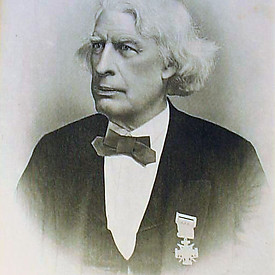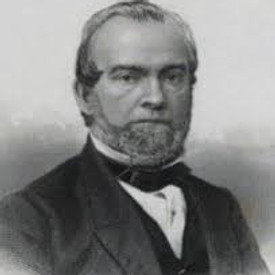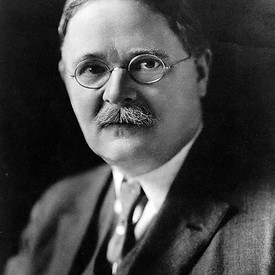LIBRARY OF MASONRY
A Mason strives always to improve the temple of his mind by acquiring knowledge and sharpening his reasoning. The volumes in this virtual library are recommended for your edification through an attentive reading and careful winnowing of the wheat from the chaff.
The "Classic" Writers of Freemasonry
Read about the writer, then click his image to read his writings.
JAMES ANDERSON
c. 1679/1680 – 1739
Dr. James Anderson was a Scottish writer and minister born and educated in Aberdeen, Scotland. He was ordained a minister in the Church of Scotland in 1707 and moved to London, where he ministered to the Glass House Street congregation until 1710, to the Presbyterian church in Swallow Street until 1734, and at Lisle Street Chapel until his death. He is reported to have lost a large sum of money in the South Sea Company crash of 1720. Anderson is best known for his association with Freemasonry.
Anderson was a Freemason, the Master of a Masonic lodge, and a Grand Warden of the Grand Lodge of London and Westminster. He was commissioned in September 1721 by the Grand Lodge of London and Westminster to write a history of the Free-Masons, and it was published in 1723 as The Constitutions of the Free-Masons. Anderson's name does not appear on the title page, but his authorship is declared in an appendix.
Anderson's work, although of the first importance to the history of freemasonry, is unfortunately marred by a number of extravagant claims which are simply incredible. Indeed, it was shown at the tercentenary conference of the respected Quatuor Coronati research Lodge at Queen's College, Cambridge, that Anderson's history of the founding of the Grand Lodge is doubtful, since the public houses mentioned could probably not have accommodated the meetings that he claims were held in 1717. Anderson's account must be broadly accurate, having been widely published within six years of the events described, but it may have been backdated by two or three years, perhaps to aggrandize some brethren as Past Grand Officers.
LAURENCE DERMOTT
1720 - 1791
Laurence Dermott was born in Ireland and became a Freemason in 1741. He held various offices before being installed as Worshipful Master of Lodge No. 26 in Dublin on 24 June 1746. He moved to London in 1748, possibly working as a journeyman painter, and possibly with a view to expanding his father's business. He would later work as a wine merchant, like his father. He was married to Elizabeth Dermott but his will does not list any children. He lived in Aldgate, Mile End and Stepney. He served as Grand Secretary of the Ancient Grand Lodge of England from 1752 to 1771. He wrote and published the Book of Constitutions of this Grand Lodge (which he titled Ahiman Rezon) for the Ancient Grand Lodge of England, a rival Grand Lodge established in 1751 by Irish and Scottish Freemasons in London who did not hold the beliefs and practices of the English Freemasons who were organized as the Grand Lodge of London and Westminster, established in 1717. Above all, it was Dermott's drive and tenacity that is credited with turning an association of six London lodges in 1751 into a viable and successful Grand Lodge, with lodges throughout England and the colonies.
He was also an accomplished writer, orator, and teacher of masonry, as well as being the administrator who is credited with preserving and leading the Ancients through most of their history as an independent Grand Lodge. It is thanks to him that the United Grand Lodge, as it currently stands, inherits the infrastructure of the Moderns, but takes its ritual from the Ancients.
ALBERT GALLATIN MACKEY
1807 - 1881
Albert Gallatin Mackey was an American medical doctor and author. He is best known for his writing many books and articles about freemasonry, particularly the Masonic Landmarks.
After completing his early education, Albert Mackey taught school for some time to earn money for medical school. He graduated from the medical department of the College of South Carolina in 1832. He settled in Charleston, South Carolina. In 1844 he abandoned the practice of medicine. For the rest of his life, he wrote on a variety of subjects, but specialized in the study of several languages, the Middle Ages, and Freemasonry.
He acquired the Greek, Latin, Hebrew, and continental languages almost unaided, and lectured frequently on the intellectual and moral development of the Middle Ages. Subsequently, he turned his attention exclusively to the investigation of abstruse symbolism, and to cabalistic and Talmudic researches.
He served as Grand Lecturer and Grand Secretary of The Grand Lodge of South Carolina, as well as Secretary General of the Supreme Council of the Ancient and Accepted Scottish Rite for the Southern Jurisdiction of the United States.[2]
ROBERT MACOY
1815 - 1895
Robert Macoy was born in Armagh, Ulster County, Ireland, but moved to the United States at the age of 4 months. He was a prominent Freemason, and was instrumental in the founding of the Order of the Eastern Star and the Order of the Amaranth. He also founded what may be the largest Masonic publishing, regalia, and supply house currently active, Macoy Publishing & Masonic Supply Company.
Macoy had a long history in a variety of Masonic organizations and with a similar variety of offices. He was Raised to the Degree of Master Mason on February 3, 1848. He was elected Deputy Grand Master of New York in June, 1856, and reelected in 1857. He was exalted in Orient Chapter No. 138, Royal Arch Masons in 1849, became a member of Adelphic Chapter No. 150 in 1855, and later affiliated with several other Lodges. He also received the Cryptic degrees and was a charter member of Adelphic Council No. 7, Royal and Select Masters, and was elected Grand Recorder of the Grand Council in June, 1855. On April 28, 1874, he affiliated with DeWitt Clinton Commandery No. 27 Knights Templar, where his membership continued for 20 years. He received the Scottish Rite degrees sometime prior to December 9, 1850, for on that date he received the 33rd Degree, Sovereign Grand Inspector General.
In 1869 Macoy published A Dictionary of Freemasonry, which comprised his own work (General History of Freemasonry and Cyclopaedia of Freemasonry) as well as George Oliver's Dictionary of Symbolical Masonry of 1853.
ROSCOE POUND
1870 - 1964
Nathan Roscoe Pound was a distinguished American legal scholar and educator. He was Dean of University of Nebraska College of Law from 1903 to 1911 and then Dean of Harvard Law School from 1916 to 1936. He was a member of the faculty at UCLA School of Law in the school's first years, from 1949 to 1952. The Journal of Legal Studies has identified Pound as one of the most cited legal scholars of the 20th century.
As a Freemason, he was a member and Past Master of Lancaster Lodge No. 54 AF & AM Lincoln, Nebraska. He also served as Deputy Grand Master for the Grand Lodge of Massachusetts in 1915 and delivered a series of Masonic lectures for the Grand Lodge in March and April of 1916. He helped to found The Harvard Lodge A.F. & A.M. along with Kirsopp Lake, a Professor of the Divinity School, and others. He also wrote extensively on masonic law: Masonic Jurisprudence; Masonic Landmarks, The Data of Masonic Jurisprudence; Masonic Lawmaking; Masonic Common Law; Lectures On The Philosophy of Freemasonry; Lectures on Masonic Jurisprudence; and others.








